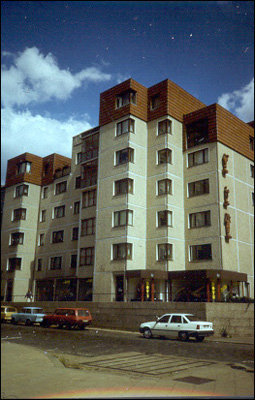Anna Sokolina on the “RUSSIA!” Panels at the Guggenheim
RUSSIA! 16 September 2005 – 11 January 2006, Guggenheim Museum, New York
The magnificent RUSSIA! exhibition at the Solomon R.Guggenheim Museum in New York(<http://www.guggenheim.org/russia>), introduced to the public as “the most comprehensive exhibition of Russian art ever shown in the United States,” features over 270 “of the greatest masterworks of Russian art, from the thirteenth century to the present, many traveling for the first time outside Russia.”(<http://www.guggenheim.org/press_office.cgi?which=/press_releases/release_116.html>)
As indicated on the wall preceding the display, it is “realized under the patronage of Vladimir Putin, President of the Russian Federation” and “organized … Read more






